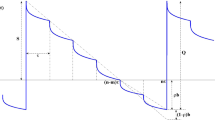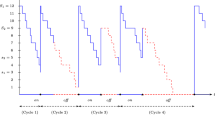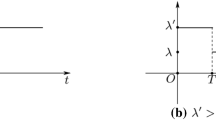Abstract
This paper considers dynamic single- and multi-product inventory problems in which the demands in each period are independent and identically distributed random variables. The problems considered have the following common characteristics. At the beginning of each period two order quantities are determined for each product. A “normal order” quantity with a constant positive lead time of λ n periods and an “emergency order” quantity with a lead time of λ e periods, where λ e = λ n - 1. The ordering decisions are based on linear procurement costs for both methods of ordering and convex holding and penalty costs. The emergency ordering costs are assumed to be higher than the normal ordering costs. In addition, future costs are discounted.
For the single-product problem the optimal ordering policy is shown to be the same for all periods with the exception of the last period in the N-period problem. For the multi-product problem the one- and N-period optimal ordering policy is characterized where it is assumed that there are resource constraints on the total amount that can be ordered or produced in each period.
Similar content being viewed by others
Author information
Authors and Affiliations
Rights and permissions
About this article
Cite this article
Wright, G. Optimal Ordering Policies for Inventory Systems with Emergency Ordering. J Oper Res Soc 20, 111–123 (1969). https://doi.org/10.1057/jors.1969.32
Published:
Issue Date:
DOI: https://doi.org/10.1057/jors.1969.32




